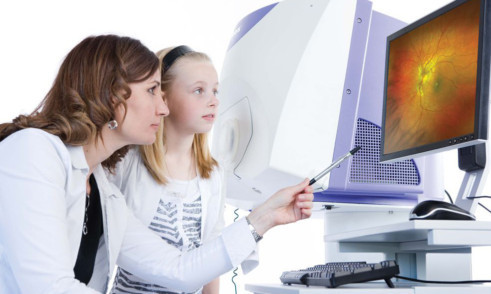A “challenging year” has seen pre-tax profits at Fife-based medical retinal imaging firm Optos slump by almost 60% to $9.5 million.
Total group turnover fell 19% to $159.5m in the year to September 30 as the firm saw a 65% fall in income from leasing out its range of ophthalmology devices.
However, sales of the company’s equipment led by demand for its next-generation retinal scan device Daytona grew by 26% in the period to $79.5m, and service and warranty revenues also climbed by 76% to $27.5m.
Introducing the company’s final results, chairman Dr Peter Fellner said Optos had been hit by slower than expected first-half revenues and the requirement for some software upgrades and enhancements to Daytona as the device was rolled out.
“We successfully grew the customer base substantially during the year,” Dr Fellner said.
“However, due to the rental profile there were far fewer renewal opportunities compared to the previous year.
“Therefore, combined revenue and other operating income fell to $159.9m for the year ended September 30 2013, compared to $196.4m last year. On an underlying basis, treating all payments receivable in the period from rental contracts as operating leases, we grew 4%.”
The results showed Optos paid out $800,000 in restructuring costs after the business was split into two regional divisions, Americas and International, earlier this year.
The move led to the closure of an R&D facility in Canterbury and a manufacturing site in Miami, while a further $1.4m was written-off following the decision by Optos to halt development of its OCT imaging device.
Chief executive Roy Davis acknowledged it had been a challenging period for the company, but was confident in the firm’s future trading prospects.
“Following a difficult start to the year, we delivered underlying revenue growth and improved cash generation whilst making good progress with the roll-out of Daytona,” Mr Davis said.
“The 25% increase in our installed customer base our largest annual increase yet includes the placement of 1,445 Daytona devices and demonstrates the increasing value of our proprietary technology to eye healthcare professionals globally.
“Looking forward, we have a strong research and development pipeline and a growing body of clinical evidence demonstrating the critical importance of diagnostics in the retinal periphery and for the treatment and management of diseases such as diabetic retinopathy.”
Mr Davis said Optos’ priorities for the year ahead were four-fold: achieving growth in its installed device base, a reduction in the cost of Daytona production, a focus on building clinical evidence, and the improvement of overall cash generation.
“Consequently in future years we would anticipate further incremental improvements in gross and operating margins, as well as continued customer growth and increased renewal opportunities,” Mr Davis said.
The company’s workforce increased marginally from 426 to 435 last year, but overall staff costs dropped from $55.2m to $49.9m. Directors’ remuneration over the same period increased by $100,000 to $1.5m.
